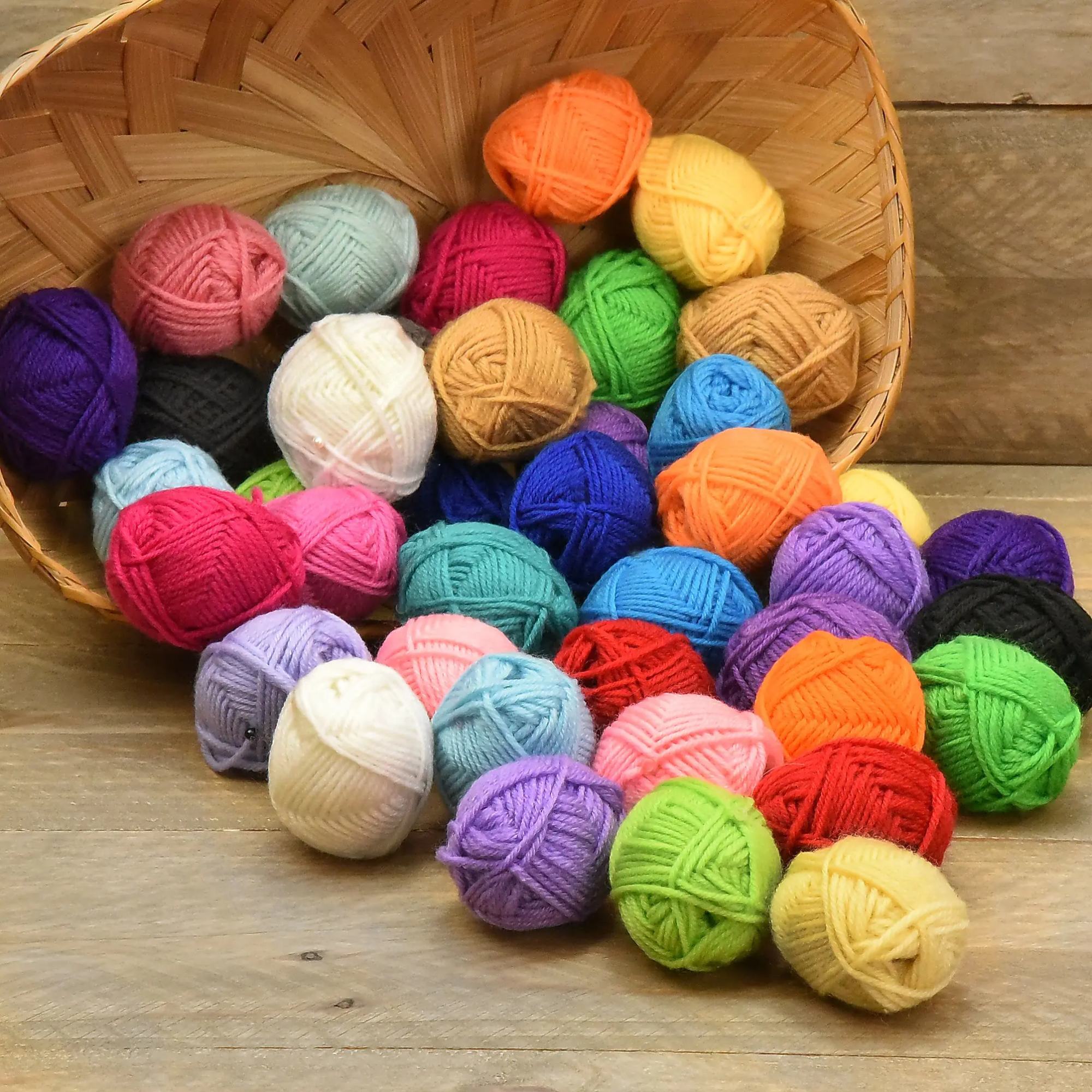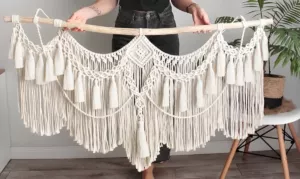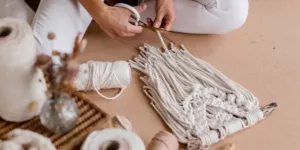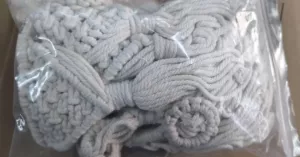Wool and Silk in Yarn – In the world of textiles, blending different fibers to create yarn is a practice as old as the craft itself. This technique, which draws upon the strengths of each material, allows for the creation of yarns that are not only versatile but also tailored to specific requirements of warmth, durability, comfort, and luxe. Wool and silk, two fibers renowned for centuries for their desirability and quality, stand out in their individual capacities. Wool, cherished for its warmth and resilience, and silk, celebrated for its lustrous sheen and smoothness, have both been cornerstones in the creation of garments and textiles that denote luxury, comfort, and elegance.
The allure of these materials is not just rooted in their individual characteristics but also in the potential they hold when combined. Blending wool with silk, artisans create a yarn that embodies the best of both worlds – the warmth and elasticity of wool, complemented by the strength and silky smoothness of silk. This fusion not only enhances the functional attributes of the yarn but also elevates its aesthetic appeal, making it a coveted choice for high-end, comfortable, and visually stunning textiles.
In this post, we’ll delve into the symbiotic relationship between wool and silk, uncovering the reasons behind blending these two prestigious fibers. We’ll explore the myriad benefits this combination brings to yarn, from enhanced durability and improved texture to its luxurious sheen and superior color depth. Join us as we unravel the threads of tradition and innovation that make wool-silk blend yarns a testament to the enduring pursuit of excellence in textile craftsmanship.
The Characteristics of Wool and Silk
Wool: The Warm Embrace
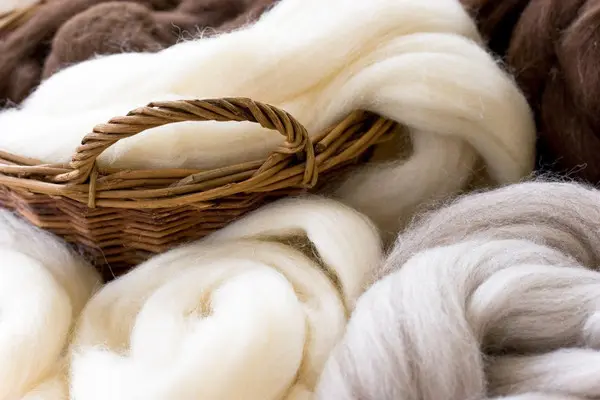
Wool, a fiber harvested from sheep and certain other animals, has been a staple in textile manufacturing due to its remarkable properties. One of wool’s most celebrated characteristics is its warmth. Wool fibers are naturally crimped, creating millions of tiny air pockets within the fabric, which serve as excellent insulators, keeping wearers warm in cold conditions. This inherent warmth has made wool a favorite choice for winter apparel, blankets, and other cozy textiles.
In addition to warmth, wool is highly breathable. This means it can efficiently manage moisture, absorbing sweat from the body and releasing it into the air, keeping the wearer dry and comfortable. This moisture-wicking ability, combined with its warmth, makes wool a versatile fiber suitable for both cold and warmer climates.
Another key property of wool is its elasticity. Wool fibers can stretch up to 50% when wet and about 30% when dry, and still bounce back to their original shape. This natural elasticity contributes to the durability and longevity of wool garments, allowing them to resist wrinkles and sagging over time.
Silk: The Lustrous Legend
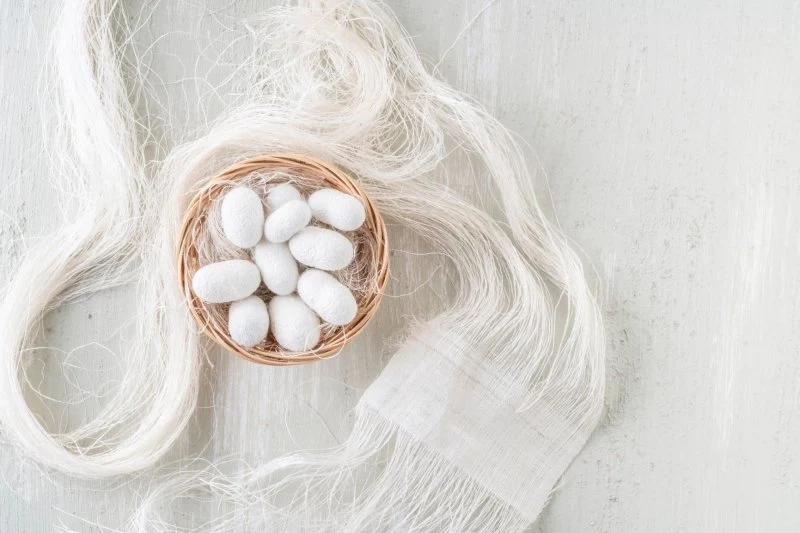
Silk, known as the queen of fibers, is produced by silkworms as they spin their cocoons. It is revered for its strength, being one of the strongest natural fibers. Despite its delicate appearance, silk has a high tensile strength, helping it withstand pulling and stretching without tearing. This strength has historically made silk an ideal choice for parachutes and other applications where both lightweight and durability are essential.
The sheen of silk is perhaps its most distinguishing feature. This natural luster is due to the fiber’s triangular prism-like structure, which refracts light at different angles, giving silk fabrics their inherent shimmer and vibrant color. This visual appeal has positioned silk as a luxury material for formal wear, elegant bedding, and premium upholstery.
Silk is also prized for its smoothness, providing an unparalleled soft touch against the skin. This smoothness has made silk especially popular for lingerie, scarves, and other garments that offer a gentle, luxurious feel.
Furthermore, silk exhibits excellent insulation properties, keeping wearers warm in winter while remaining surprisingly cool in summer due to its natural temperature-regulating capabilities. This has made silk a year-round choice for clothing and sleepwear.
Wool and Silk in Textiles
Individually, both wool and silk have carved their niches in the textile industry. Wool’s resilience and coziness have made it ideal for heavy-duty and warm clothing like jackets, sweaters, and socks. In contrast, silk’s elegance and comfort have seen it preferred for high-end and delicate items such as dresses, ties, and pillowcases. Together, these materials have graced wardrobes and homes, each bringing a unique set of benefits to the textiles they comprise.
Advantages of Blending Wool and Silk
Enhanced Durability
Silk fibers can greatly increase the strength and longevity of wool yarn due to their intrinsic high tensile strength, which refers to their ability to withstand tension without breaking. Silk’s durability mixed with wool’s natural resilience results in a yarn that can resist stretching, bending, and friction much better than wool alone. This reinforced structure means that wool-silk blend fabrics are better equipped to retain their original condition over time, leading to a longer lifespan of the garment or textile.
Improved Texture and Drape
Wool tends to have a rougher texture, which can sometimes lead to itchiness when worn against the skin. By introducing silk, which is renowned for its smoothness, the blended fabric becomes softer and more inviting to touch. Moreover, silk fibers contribute a fluid drape, giving the textile a more graceful and flattering flow when it’s fashioned into clothing. This improved texture and drape elevate wool fabrics, making them feel more luxurious and versatile in their applications.
Temperature Regulation
Both wool and silk have inherent thermoregulatory properties, but they function differently. Wool is an excellent insulator, trapping air and retaining heat, whereas silk is a more breathable fiber that can wick away moisture and moderate temperature. When combined, the two fibers complement each other, offering enhanced thermal properties that provide warmth without overheating. The result is a fabric that can be comfortably worn across a range of temperatures, making it suitable for year-round use.
Luxurious Sheen and Color Depth
Silk fibers have a unique sheen due to their triangular, prism-like structure, which reflects light at many angles, giving silk its distinctive luster. When blended with wool, this sheen adds a luxurious gloss to the otherwise matte appearance of wool. Additionally, silk can hold vibrant dyes well, resulting in rich and deep colors that are visually striking. This blend not only offers the visual appeal of silk’s luster but also enhances the depth and vibrancy of the color in wool fabrics.
The Best of Both Worlds in Wearability
Wool and silk blends yield a fabric that is highly wearable and often better suited for sensitive skin. Silk’s hypoallergic and smooth qualities make it gentle on the skin, reducing the potential for irritation that can sometimes be associated with wool fibers. Together, these materials create a textile that has a luxurious feel, offers the wearer the heat regulating benefits of both fibers, and supports longevity in wear. Blended fabrics are particularly ideal for items that are in direct contact with the skin, like undergarments, scarves, and linings of clothing, where comfort is paramount.
Practical Uses for Wool-Silk Blend Yarn
Wool-silk blend yarns offer a unique combination of properties that provide both comfort and elegance, making them ideal for a variety of items across fashion and home textiles. Here are some examples of products that benefit from this exquisite blend:
Fashion Items:
- Lightweight Sweaters: These sweaters are perfect for transitional weather, providing warmth without the weight. The silk lends a subtle sheen, elevating the sweater’s appearance for casual or office wear.
- Shawls and Scarves: The drape of wool-silk blends makes for beautiful shawls and scarves that are not only warm but also flow elegantly. They can serve as accent pieces for evening wear or practical accessories during cooler seasons.
- Luxurious Accessories: Ties, pocket squares, and even socks made from wool-silk yarn carry an opulent quality. They complement formal attire and can provide a pop of color or a touch of sophistication.
- Evening and Bridal Wear: Due to the fabric’s graceful flow and attractive sheen, it’s an excellent choice for gowns and dresses for special occasions, including bridal and evening wear.
- Lingerie and Undergarments: The softness and smoothness of silk make these items exceptionally comfortable, while the wool provides warmth and a natural breathability.
Home Textiles:
- Throw Blankets: Wool-silk blend yarns can create cozy yet lightweight throw blankets for couches and beds, adding a layer of warmth that’s not overly stifling.
- Decorative Pillows: The rich color and sheen of the blend can lend a luxe feel to living room or bedroom decor.
- Curtains: The inherent drape quality of the blend lends itself to elegant window treatments that can insulate a room while looking stylish.
Occasions and Uses:
- Trans-Seasonal Layering: Wool-silk blend clothing is an excellent choice for layering in climates where temperatures can fluctuate throughout the day, providing moderate insulation and wicking away moisture for comfort in a range of conditions.
- Travel: For travelers, wool-silk apparel is ideal because it resists wrinkles, regulates temperature well, and can often be worn multiple times between washings due to the natural odor resistance of wool.
- Outdoor Activities: Whether it’s a silk-wool blend hat for hiking in the spring or fall, or a lightweight scarf for a cool summer evening, these blends offer the ideal combination of protection and comfort.
- Business Settings: The professional look of wool-silk blend garments, along with their comfort, makes them suitable for business attire, especially in fluctuating indoor temperatures.
Caring for Wool-Silk Blends
Wool-silk blend textiles combine two luxurious fibers, each requiring careful handling to maintain their quality and longevity. Here are best practices for the care of wool-silk blend garments and textiles:
Best Practices for Maintaining Wool-Silk Blend Textiles:
- Read Care Labels: Always check the manufacturer’s care instructions before cleaning as they are specifically tailored for the item in question.
- Hand Washing: If the care label permits, hand wash wool-silk blends in lukewarm water using a gentle detergent designed for delicate fabrics. Do not wring or twist the fabric; instead, gently swirl the garment in the water to avoid stretching or damaging the fibers.
- Machine Washing: If machine washing is necessary and allowed according to the care label, use the delicate or woolens cycle and place the item in a mesh laundry bag for added protection. Opt for a mild detergent and cool water.
- Drying: Lay wool-silk blend fabrics flat on a clean, dry towel to air dry. Avoid hanging, as the weight of the wet fabric can cause stretching. Also, avoid direct sunlight and heat sources which can damage fibers.
- Ironing: Use a low to medium heat setting with a pressing cloth between the fabric and iron to prevent scorching. Avoid steam, as it can lead to watermarks on silk.
- Storing: Store wool-silk blend textiles in a cool and dry place away from direct sunlight which can fade colors over time. Fold garments neatly to avoid creasing and use padded hangers if hanging is necessary.
- Moth Prevention: Since wool is susceptible to moths, consider storing wool-silk garments with cedar blocks or sachets of lavender to deter pests naturally.
Comparing Care Requirements: Pure Wool vs Wool-Silk Blends
Pure Wool:
- Pure wool items typically require cool temperatures for both washing and rinsing, and agitation should be minimal to prevent felting.
- Wool often requires a specific wool detergent, especially for machine washing.
- Tumble drying is generally not recommended for pure wool garments, as it can cause shrinkage and felting.
- Pure wool items can be prone to pilling and may periodically require a fabric comb or shaver to maintain their appearance.
Wool-Silk Blends:
- Wool-silk blends also necessitate delicate handling but may be slightly more resilient to handling due to the strength of silk fibers.
- While silk can typically withstand warmer water than wool, it’s best to err on the side of cooler water when dealing with blends, to cater to wool’s temperature sensitivity.
- The silk component of the blend is susceptible to damage from high heat and sunlight, so ironing and drying require extra precautions compared to pure wool.
- Wool-silk blends may also benefit from specific silk detergents or very mild detergents that will not strip away silk’s natural oils.
Environmental and Economic Impact
Sustainability Considerations
Wool:
- Eco-friendliness: Wool is a natural, renewable fiber produced by sheep, which grow a new fleece annually, making it sustainable in that aspect. Wool is also biodegradable and compostable, breaking down into beneficial nutrients for the soil.
- Impact Concerns: There are environmental concerns linked to wool production. These include methane emissions from sheep, potential overgrazing leading to land degradation, and the use of water and chemicals in the processing of wool.
- Animal Welfare: Sustainable wool production is also closely tied to animal welfare. Practices like mulesing (the removal of skin from around a sheep’s breech to prevent flystrike) have raised animal rights concerns. Ethically sourced wool, where animal welfare is prioritized, is therefore sought after.
Silk:
- Eco-friendliness: Silk is a natural fiber produced by silkworms. It’s renewable and biodegradable, which are positive environmental aspects. Some silk farms also utilize the full life cycle of the silkworm, incorporating organic practices.
- Impact Concerns: Conventional silk production can be resource-intensive and sometimes involves harsh chemicals to remove the sericin. Additionally, there are ethical considerations concerning the traditional process where silkworms are killed in their cocoons to harvest the silk.
- Ethical Alternatives: There are more humane alternatives, such as ‘peace silk’ or ‘Ahimsa silk,’ where the fiber is collected after the silkworm has emerged.
Blended Wool-Silk:
- Impact of Blending: Mixing wool and silk harnesses properties of both fibers. The blend might affect the eco-friendliness depending on the ratio and production practices. If both materials are sourced sustainably, then the blend can be relatively environmentally friendly.
- Benefits: The addition of silk can improve the durability and longevity of wool textiles, potentially reducing waste and the need for frequent replacements.
- Considerations: It’s crucial to look at the sustainability and ethical standards of each component in the blend. Blending does complicate recycling due to difficulties in separating mixed fibers at the end of a product’s life.
Cost Implications
Cost of Silk and Wool:
- Silk: Pure silk is one of the most expensive fibers due to its labor-intensive production process and its luxurious status. The cost of silk can be amplified by ethical considerations, such as in the production of ‘peace silk.’
- Wool: The cost of wool varies widely, depending on the type of wool and how it’s sourced. Merino wool, for example, is on the higher end, while more coarse wool can be less expensive. Ethically sourced and processed wool also adds a premium to the cost.
Blending for Accessibility:
- Luxury at Reduced Cost: Blending silk with wool can create a fabric that offers the benefits of silk – its sheen, smoothness, and drape – with the warmth and resilience of wool, but at a more accessible price point than pure silk.
- Economic Viability: For manufacturers, combining silk with a less expensive fiber like wool can make the final product more competitively priced. This allows them to cater to a broader market that desires luxury without the high cost.
- Consumer Perspective: From a consumer standpoint, wool-silk blends present a balance between quality and affordability. While not as cheap as synthetic blends, these natural fiber blends offer value through enhanced performance and increased longevity of the product.
Conclusion
Blending wool with silk brings together the best of both fibers, creating a synergy that enhances their intrinsic qualities. This marriage of materials yields a fabric that offers warmth, resilience, and moisture-wicking properties from wool, alongside the luxurious sheen, smoothness, and strength of silk. The result is a premium, versatile textile that maintains the eco-friendliness and biodegradability of its natural origins, while presenting a more accessible price point for those seeking luxury without the lavish expense.
The benefits of wool-silk blends are numerous, catering to both the environmentally conscious and those with an eye for elegance and longevity in their textiles. For enthusiasts looking for a project that embodies comfort, durability, and a touch of sophistication, wool-silk blend yarns offer an unrivaled experience. Whether it’s for knitting a cozy sweater that feels light yet warm or a chic scarf with a subtle luster, wool-silk blends provide an unmatched combination of aesthetic appeal and functional properties.
We encourage you to experience the difference for yourself by incorporating wool-silk blend yarns into your next project. The unique characteristics of these blends promise to elevate your crafting experience, offering results that are as delightful to make as they are to use or wear.

